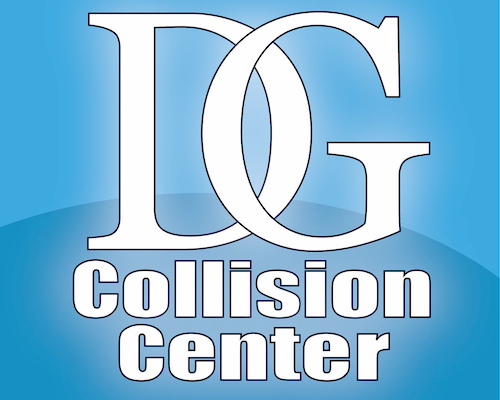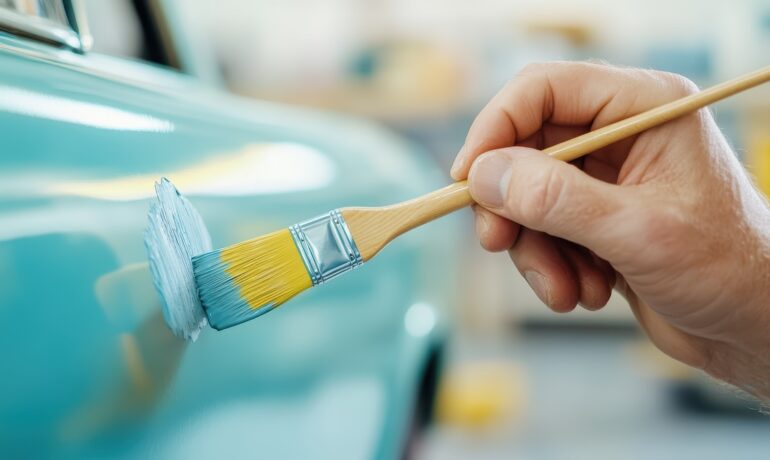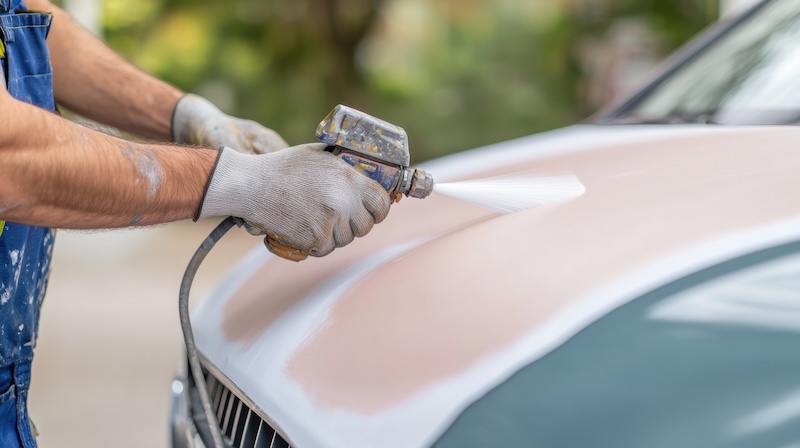 Auto Body Paint: Should You DIY It?
Auto Body Paint: Should You DIY It?
The allure of DIY auto body paint and repair might tempt you. This is especially true when looking to save money on your vehicle’s restoration. However, although YouTube tutorials make car painting look straightforward, professional auto painting involves complex techniques, specialized equipment, and years of expertise that DIY methods simply can’t match. In fact, what starts as a cost-saving project often leads to expensive corrections and disappointing results.
Professional auto body shops in Covina like ours use advanced spray techniques, temperature-controlled environments, and premium materials to ensure lasting, showroom-quality finishes. Whether you’re dealing with collision damage or simply want to refresh your car’s appearance, understanding the technical differences between professional and DIY painting can help you make an informed decision about your vehicle’s finish.
Professional Car Paint Application vs DIY Auto Body Paint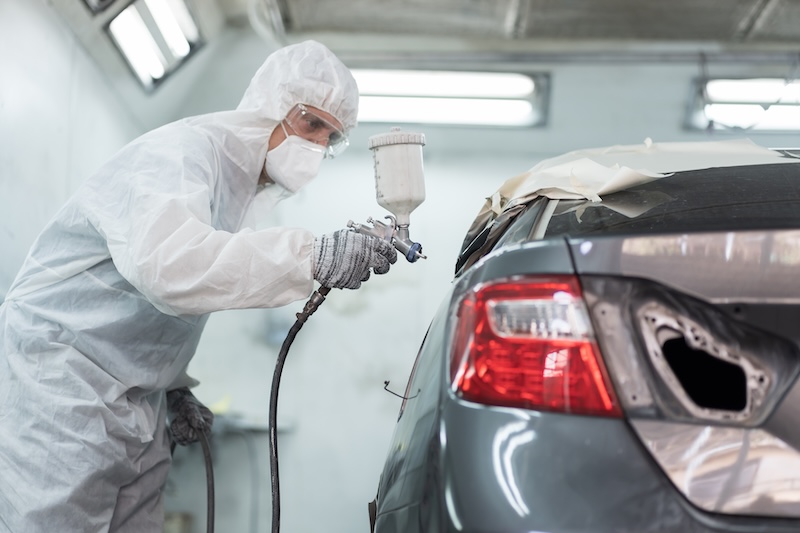
Professional auto painting requires much more than just spraying color onto a vehicle. Behind every flawless finish lies a complex science that combines precise techniques, controlled environments, and exact chemical formulations. Auto body shops like ours in Covina apply these scientific principles daily to achieve results that consistently outperform DIY attempts.
Advanced Spray Techniques Used by Experts
Professional painters utilize High Volume Low Pressure (HVLP) spray systems that fundamentally transform how paint adheres to vehicles. Unlike standard aerosols used in DIY projects, these systems deliver paint at lower pressures (typically 5-5.5 PSI) but higher volumes, creating significantly better adhesion and finish quality.
The technique itself requires extensive training and practice. Professionals maintain a consistent distance of approximately 6-8 inches from the surface, applying paint perpendicular to the vehicle’s body. This precise approach involves methodical horizontal and vertical passes that ensure even coverage without creating runs or sags.
Furthermore, professional spray techniques minimize what experts call “bounce back” – the amount of paint that fails to adhere to the surface. HVLP systems reduce bounce back by 50-80% compared to conventional methods, resulting in more efficient material usage and superior finish quality.
We also understand the importance of applying multiple thin coats rather than attempting to cover the surface with one thick layer. This gradual building process, followed by 2-4 coats of protective clear lacquer, creates depth and richness impossible to achieve with DIY methods.
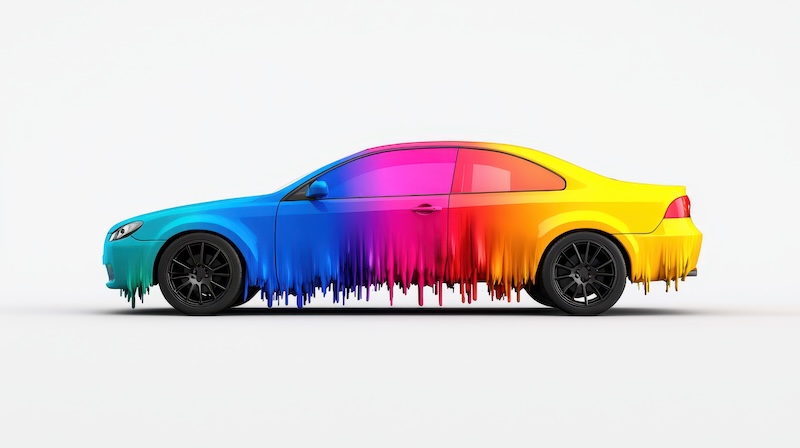 Temperature and Environment Control Benefits of Pro Paint vs DIY Auto Body Paint
Temperature and Environment Control Benefits of Pro Paint vs DIY Auto Body Paint
The controlled environment of a professional paint booth represents one of the most significant advantages over DIY painting. Temperature variations as small as 5 degrees can dramatically affect paint application and finish quality. Professional facilities maintain precise climate control throughout the painting process.
Paint Mixture Precision: Why It Matters
The exact science of paint formulation represents another area where professional auto body shops excel. Professional-grade paints require precise mixing which must be measured with specialized equipment.
We use ultra-precise scales that are ten times more accurate than standard measuring tools. This precision ensures consistent color matching and application properties. Even slight deviations in mixture ratios can dramatically alter the paint’s viscosity, drying time, and durability.
Professional Equipment vs. DIY Auto Body Paint Tools: A Technical Comparison
The stark contrast between professional and DIY auto painting becomes most evident when examining the specialized equipment used in commercial body shops. Even with quality paint and proper technique, the tools available to professionals in Covina create a technological gap that DIY enthusiasts simply cannot bridge without significant investment.
Commercial Paint Booths: Creating the Perfect Environment Compared to DIY Auto Body Paint
Professional paint booths represent sophisticated engineering systems that fundamentally transform the painting process. These fully enclosed environments precisely control airflow, temperature, and particle contamination to ensure flawless finishes. Most professional booths operate using either negative pressure (which pulls air through exhaust fans) or positive pressure systems (which use Air Make-Up units to push filtered air into the space).
Professional-Grade Sprayers
![]() The difference between professional and consumer spray equipment extends far beyond price. Professional auto body shops primarily use High Volume Low Pressure (HVLP) spray systems that achieve transfer efficiencies of 65-85%, compared to only 30-50% for conventional systems. This means professionals can apply more paint to the vehicle while creating less waste and overspray.
The difference between professional and consumer spray equipment extends far beyond price. Professional auto body shops primarily use High Volume Low Pressure (HVLP) spray systems that achieve transfer efficiencies of 65-85%, compared to only 30-50% for conventional systems. This means professionals can apply more paint to the vehicle while creating less waste and overspray.
Sanding and Preparation Tools
Surface preparation represents perhaps the most significant technical difference between professional and amateur results. Professional shops utilize specialized sanding tools designed for specific preparation stages.
Premium Automotive Paints: What Professionals Use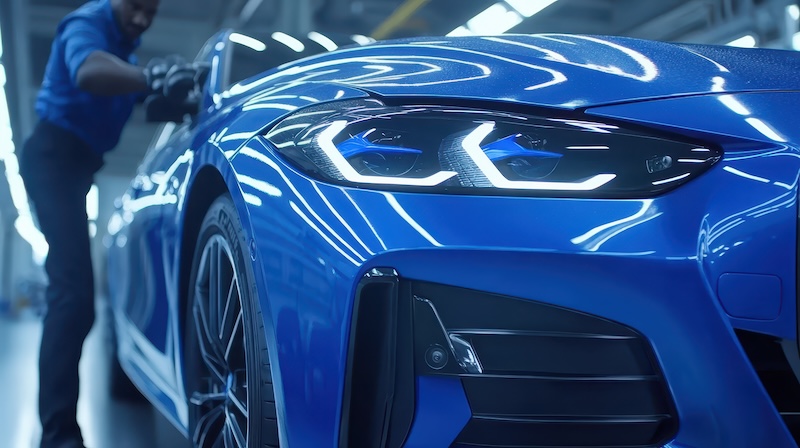
Professional auto body shops in Covina primarily utilize automotive paint brands that represent industry leaders known for durability and performance. Sherwin-Williams Automotive Finishes, frequently used in Covina repair facilities, manufactures complete lines of advanced technology coatings.
Color Matching Technology: Achieving Perfect Results Compared to DIY Auto Body Paint
Professional color matching fundamentally differs from DIY approximation. Covina’s repair shops employ advanced spectrophotometers that measure and analyze a vehicle’s existing paint with exceptional precision 17. These sophisticated instruments capture subtle variations in hue, saturation, and brightness often invisible to the naked eye.
Clear Coat Application: The Professional Advantage
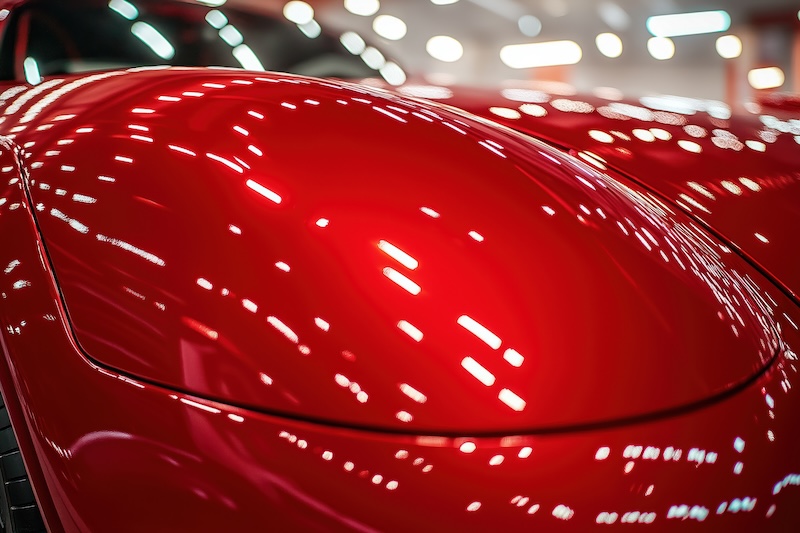 The clearcoat layer, despite appearing simple, ranks as the most challenging coating to apply correctly 1. Professional technicians understand that improper application leads to peeling, orange peel texture, or premature failure.
The clearcoat layer, despite appearing simple, ranks as the most challenging coating to apply correctly 1. Professional technicians understand that improper application leads to peeling, orange peel texture, or premature failure.
Common DIY Auto Body Paint Mistakes and Their Long-Term Consequences
Attempting a DIY auto body paint job often leads to disappointing results that extend far beyond mere esthetic issues. Even meticulous home painters frequently encounter technical problems that professional auto body repair specialists avoid through training and specialized equipment. Avoid these complications by calling in a professional:
- Improper Surface Preparation Issues
- Uneven Application and Orange Peel Effect
- Contamination Problems in Non-Controlled Environments
Inadequate Drying and Curing Complications
Many DIY painters fail to understand that drying and curing represent entirely different processes. Paint drying occurs as solvents evaporate, making the surface feel dry to touch, while curing involves complete hardening and bonding to the substrate. Rushing this process or painting in improper conditions creates lasting problems.
Health and Safety: Professional Standards vs. DIY Auto Body Paint Risks
Beyond esthetic concerns, automotive painting presents significant health and safety challenges that professional auto body repair shops are specifically equipped to address. Safety standards in professional environments protect both workers and customers, while DIY painters often remain unaware of serious hazards.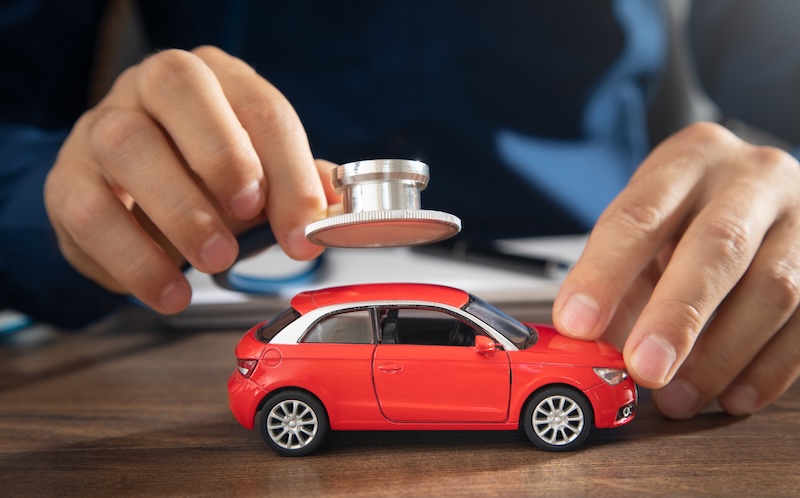
About DG Collision Center, an Auto Body Shop in Covina, California
We would love to help restore your vehicle following a car accident or comprehensive damage. DG Collision Center in Covina, California is your one-stop-shop in Covina for auto body repair after car accidents. Our highly trained team includes specialized technicians. We work directly with all insurance companies. This enables our customers to file a claim without even needing to be present. We pride ourselves in providing excellent service at DG Collision Center in Covina, California.
